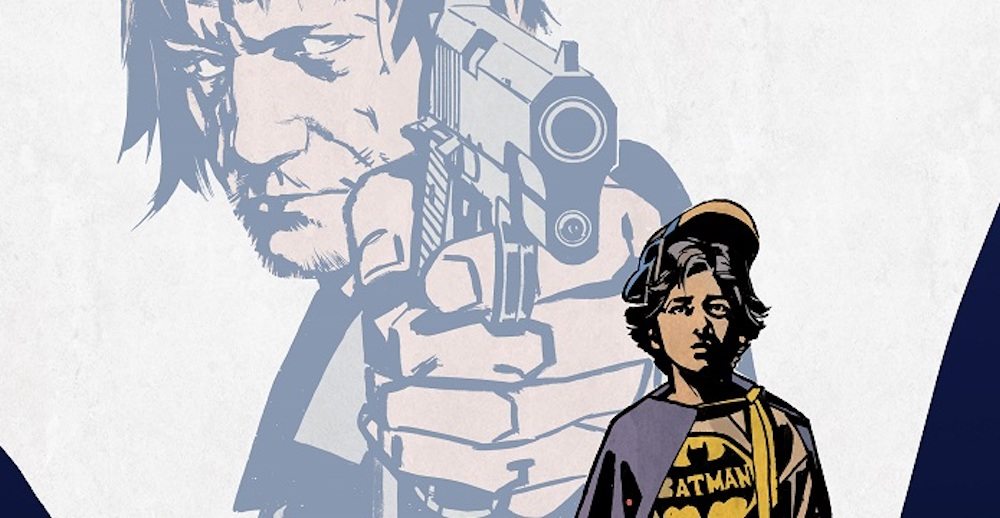
Batman: Creature of the Night #1 – Kurt Busiek, Writer; John Paul Leon, Artist
Ratings
Ray – 10/10 (One of the very best comics put out in 2017)
Corrina: The Makings of a Classic
WARNING: MILD SPOILERS BELOW.
Ray: Thirteen years ago, DC put out one of the oddest comics they’ve ever released. It was called Superman: Secret Identity, and it focused on a teenager named Clark Kent, in the real world, who began manifesting the powers of Superman. I remember it threw me because of the similarity to Superboy Prime (who would go on to become one of DC’s most loathsome villains the previous year), and I didn’t know what to expect. What I got was one of the most brilliantly human Superman stories ever told, up there with DC: The New Frontier and Superman: For All Seasons. But that’s because Superman is inherently a story of hope and seeing the best in humanity. Through the real-world filter, it was more poignant than ever.
Now, Busiek is back (with the grittier John-Paul Leon replacing Secret Identity‘s Immonen) to tell a story with a similar concept for Batman. But Batman isn’t a story of hope and seeing the best in humanity. It’s a story of grief and a child’s white-hot rage.
Corrina: Sometimes, when I receive something new, I skip reading the creator credits so I can have an opinion based solely on the work. As I was reading this intense and powerful first issue, I mentally began making comparisons to Secret Identity, except, in this case, the creators were taking a realistic look at grief and loss through the eyes of a child who worships Batman.
And so I finally looked at the credits and was not at all surprised to see Busiek’s name in the credits. Of course.
And Leon’s art is amazing because it’s so well-suited to this story and because it reminds me strongly of David Mazzucchelli’s iconic art in Batman: Year One. Leon was a perfect choice for this tale.
Ray: Bruce Wainwright seems like a well-adjusted child, aside from an unusual obsession with Batman. He loves his parents and is especially close to his Uncle Allen Frederick (who young Bruce nicknames Alfred). This Alfred is heavily implied to be a gay bachelor, and as the story takes place in 1968, that explains why he can’t be there for Bruce when tragedy strikes in the same way that the comic Alfred was. The incident that takes Bruce’s parents is different – a home invasion that nearly kills Bruce as well – and it raises the question, did the two-month coma change Bruce in ways that explain his increasingly unhealthy, obsessive behavior? Officer Gordon (here an African-American cop who tries to help, but is stymied by the cold case) and Alfred try to help, but as Bruce winds up at a boarding school with only his demons for company, it becomes clear this is not going to be a story with a happy ending.
Corrina: I’m not sure the ending is going to be unhappy. It’s certain that the Bruce in this story is desperately unhappy and doesn’t understand why he has to be so alone, even denied the chance to live with his beloved “Uncle Alfred.” But there are hints around Bruce that he might someday be able to see past his grief and loss as an adult.
Uncertain hints, true, because this Bruce has tapped into what a Jungian might call the worldmind and summoned something from his imagination that may just consume him, as fictional’s Batman’s need to protect others consumes him. I still have hope, however, that this Batman story need not be a tragedy in the end.
Ray: To say too much about the nature of “Batman” would give away this book’s best moments, but suffice it to say this is – like Secret Identity – a world where the unnatural collides with the mundane. And at its core, this is a horror comic, with some of the most disturbing (if not overtly violent) visuals in any comic this year. There are similarities to the Dawnbreaker, the best of the Dark Nights one-shots, in the idea of what a child’s rage could do when handed unbridled power. But while the Dawnbreaker had to rush Bruce through his journey in one issue, this one seems to be playing itself as a slow-unfolding tragedy. It’s clear from the opening narration that Alfred is filled with regret for what Bruce became, but what exactly that is and how he gets there is yet to be determined. It’s one of the most emotionally true, painfully real, and brilliantly disturbing comics of the year.
This may not only be the best DC comic of the year, it has potential to be one of the best works of fiction in 2017/2018 if the quality stays at this level.
Corrina: This only resembles the idea of Dark Nights: Metal’s Dawnbreaker in the most shallow way, in that it takes on what might happen with a child full of rage with access to a forbidden power.
But Creature of the Night is far more interested in delving deeper, in showing how fiction can provide solace to those who’ve lost someone or, sometimes, how that grief feeds rage. This story has tapped into everything that makes the Batman an archetype, and why I, as someone who lost a parent when young, identified so strongly with Bruce Wayne, though we had nothing else in common.
This tale is about everything that makes Batman so resonant to so many. That is, as Ray said, what makes it so painfully real.
Disclaimer: GeekDad received this comic for review purposes.



